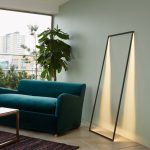Introduction
There is no denying that lighting plays a crucial role in enhancing the aesthetics and ambiance of any space. However, with the advent of bespoke lighting, the game has been taken to a whole new level where lighting is seen not just as a functional necessity but as an art form. Bespoke lighting allows designers to create custom pieces that are not only unique but also personalized to the specific needs and tastes of the client. This article delves into the world of bespoke lighting and how it has revolutionized the concept of lighting design.
Bespoke Lighting: A Brief Overview
Bespoke lighting is a term used to describe custom-made lighting fixtures that are designed and crafted according to the client’s specifications. The concept of bespoke lighting is rooted in traditional craftsmanship, where artisans would create one-of-a-kind pieces for their clients. However, with the advancement of technology, bespoke lighting has become more accessible to a wider audience while still maintaining its artisanal quality.
The Benefits of Bespoke Lighting
One of the most significant advantages of bespoke lighting is the ability to create unique pieces that reflect the client’s style and personality. With bespoke lighting, the design possibilities are endless as the client can collaborate with the designer to choose the colors, materials, and finishes that meet their preferences. Furthermore, bespoke lighting allows clients to create pieces that fit perfectly with their space, whether it’s a commercial or residential setting.
The Role of Technology in Bespoke Lighting
Technology has played a significant role in the evolution of bespoke lighting. Advanced software and 3D printing have made it easier for designers and manufacturers to create complex shapes, reduce production time, and lower costs. Moreover, technology has empowered clients to visualize their designs before production, making the design process more efficient and collaborative.
The Bespoke Lighting Process
The bespoke lighting process involves several stages, including conceptualization, design, and production. At the conceptualization stage, the designer and client collaborate to create a brief that outlines the project’s scope and objectives. The designer then proceeds to develop a concept that reflects the client’s preferences and style. The design stage involves creating detailed drawings and 3D models to help the client visualize the final product. Finally, during production, the lighting fixture is crafted and assembled in the workshop, ready for installation.
Bespoke Lighting vs. Off-the-Shelf Lighting
While off-the-shelf lighting fixtures may be more affordable and readily available, they lack the uniqueness and personalization that bespoke lighting offers. With bespoke lighting, clients can create pieces that fit their tastes, budgets, and space, making the process more rewarding and fulfilling.
The Future of Bespoke Lighting
As technology continues to evolve, bespoke lighting is likely to become more sophisticated and accessible. With the rise of sustainable and eco-friendly design, bespoke lighting is poised to incorporate more sustainable materials and production methods. Moreover, the trend towards smart homes and Internet of Things (IoT) technologies may influence the way bespoke lighting is designed and integrated with other systems in the future.
The Growing Demand for Bespoke Lighting
The demand for bespoke lighting is on the rise, fueled by the desire for unique and personalized lighting fixtures. Bespoke lighting caters to a wide range of clients, including homeowners, interior designers, architects, and commercial clients. With the advent of online marketplaces such as Etsy and Not on the High Street, bespoke lighting has become more accessible to a broader audience, making it a viable option for clients of all budgets.


